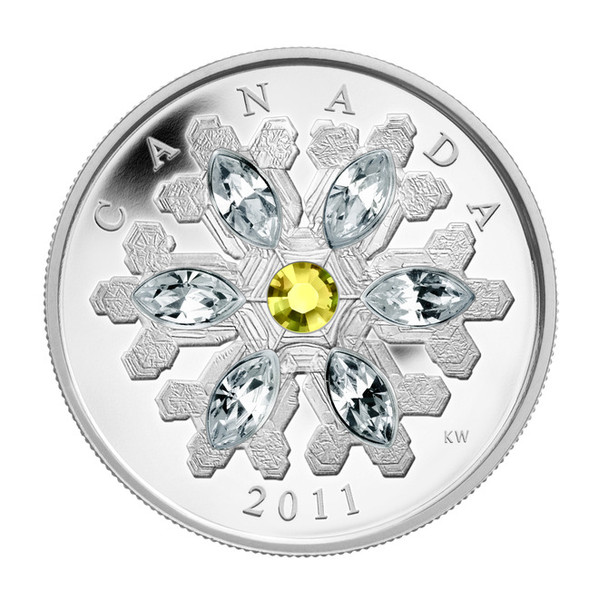Description
Theme:
The first coin in the Royal Canadian Mint’s exciting new series featuring Canada’s animal architects focuses on the honey bee and its amazing home.
Description:
This silver proof coin is certified to be 99.99% pure silver with a diameter of 27 millimetres and a metal weight of 7.96 grams. The reverse design by Canadian artist Yves Bérubé features a painted honey bee standing atop a flower blossom, its head bowed to collect the precious nectar that will sustain its colony. This tiny pollinator is layered over an embossed honeycomb whose perfectly symmetrical hexagons cover the entire polished field of the coin’s reverse.
The reverse features the word “CANADA,” the date “2013,” and the face value of “3 DOLLARS.” The obverse features the effigy of Her Majesty Queen Elizabeth II by Susanna Blunt.
Special Features:
- Did you know that for the honey bee to create 500 grams of honey they must collect nectar from approximately one million flowers? Collect this coin to learn more about the fascinating life of the honey bee!
- This is the first coin in the Royal Canadian Mint’s exciting new silver proof series featuring exceptional architects of Canada’s animal world and their unique constructions.
- Mintage is limited to 10,000 coins.
- An excellent gift for nature lovers and an exceptional addition to any collection featuring colour and photo-image designs, Canadian wildlife, or Canadiana.
- The details on the coloured bee will surprise you!
Product Specifications:
Face Value: 3 dollars
Mintage: 10,000
Composition: 99.99% fine silver
Weight (g): 7.96
Diameter (mm): 27
Edge: Serrated
Finish: Proof
Certificate: Serialized
Artist:Yves Bérubé
Packaging
Coin is encapsulated and presented in a Royal Canadian Mint branded maroon clamshell case lined with flock and protected by a black sleeve.
Finish Size: 67 x 67 mm
Advertising Date: April 2, 2013
Launch Date: April 9, 2013
Complete Certificate Text:
Animal Architects
Canada’s vast wilderness is home to thousands of animal species; among these are the builders—some of nature’s most talented and fascinating creatures. From bird nests to beaver dams, honeycombs to anthills, the structures designed and created by these animal architects are models of structural strength and intricacy that have inspired human building in fields such as architecture and engineering.
The Honey Bee: Amazing Insect Engineer
The beehive, home to the honeybee, is built around an iconic structure: the honeycomb. This amazing construction is a mathematically perfect matrix of hexagons that optimizes spatial coverage while minimizing the amount of construction material required for building—a feat of engineering efficiency that is virtually unmatched.
Apis mellifera, the species of honey bee found in Canada, is an important pollinator. To create 500 grams of honey, a honeybee must collect nectar from approximately one million flowers—an astonishing ratio that means that the honey bee, not native to Canada but introduced here about 300 years ago, plays a critical role in natural and commercial plant propagation. But the honey bee’s amazing talents extend far beyond this vital task.
Using a communication system based around pheromones and behavioral signals like their famous “dances,” these champion team players of the insect world have a rigidly organized social structure that enables them to build and supply a living environment whose internal symmetry has been the envy of mathematicians for thousands of years.
The colony itself is composed of three groups: workers, drones, and the queen. Scouted in advance by worker bees, hive locations tend to be in the cavities of trees mostly but also of rocks and occasionally in hollows of buildings and other man-made structures. Once the location is selected, the bees work together to build their amazing home before escorting their queen there. Beginning at the top of the cavity, the bees construct their hive comb by comb, layer by layer. The upper part of the hive is reserved for honey storage. Pollen is stored in the rows of cells beneath this. Lower down are the cells where new workers and drones are bred. The queen’s quarters are at the bottom.
The hive is composed of parallel honeycomb layers—amazing structures comprising hexagonal cells that are one of nature’s most mathematically precise animal-built constructions. The individual cell walls are formed from secreted wax that is arranged into perfect hexagons whose six walls, each of exactly the same width, meet at precisely 120 degrees.
This structure is even more amazing when considered three-dimensionally. The back “wall” of each cell is trihedral, with adjacent pairs of planes also meeting at 120 degrees. The closed back wall of one honeycomb layer forms part of the side walls of the next layer, and so on, each comb nesting perfectly into the next for maximum structural integrity. The cells themselves are angled slightly upwards to help contain the honey, pollen, larvae, and eggs they are made to hold.
Though the drones are expelled before the colony’s winter rest, the workers and queen bee can live up to 4 years in their amazing home.













